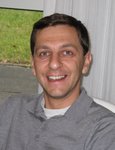
Quantum optics deals with atoms and photons and it aims to explore fundamental quantum physics under well-defined conditions and to develop functional quantum devices for information processing, communication, precision measurements, etc. Cold, trapped atoms interacting with laser fields represent a remarkably clean and controllable platform to simulate and study many-body physics. A crucial ingredient for realizing various phases of matter is availability of interactions with different range and strength. Neutral atoms in the lower electronic states interact very weakly with each other, but when excited to the high-lying Rydberg states, their interaction can be very strong over large distances. This is because the atomic electron on a very high orbit is far from the ionic core and thus is easily polarizable. The resulting dipole-dipole or van der Waals interactions between the Rydberg atoms makes them uniquely suited for realizing strongly-interacting many-body systems and for implementing various quantum information processing tasks.
Most of the studies of Rydberg excitations of multi-atom systems so far neglected the relaxation processes, dealing with either short excitation pulses or assuming adiabatic population of the ground state of the corresponding many-body Hamiltonian. The lifetime of Rydberg states is long but finite, any excitation laser has certain linewidth, and the thermal motion of even cold atoms can lead to decoherence. This necessitates the studies of dissipative many-body systems, which are of course interesting on their own. Moreover, trapping cold atoms close to the surface of a dielectric or a superconductor and their Rydberg excitation via external fields is bound to lead to decoherence whose precise mechanism and influence on the performance of such complex systems only now is being assessed.
In this project, Petrosyan plans to investigate the influence of dissipation and relaxations on (i) the Rydberg excitation and equilibration in many-atom systems, and (ii) on the performance of quantum interfaces between the atomic ensemble qubits and optical or microwave wavegudes. These are challenging computational problems which are relevant to most experimental situations.
Project title:
Simulating dissipative dynamics of strongly interacting Rydberg atoms
Area of research:
Physics
Fellowship period:
1 Feb 2014 – 31 Feb 2015
Fellowship type:
Jens Christian Skou fellow

This fellowship has received funding from The Aarhus University Research Foundation.

Figure: Spatial configuration of six Rydberg excitations, with the axial P(ρ) and angular P(φ) probability distributions, in an ensemble of 400 atoms trapped in a 2D disk of diameter 3db (db=3.8µm) and driven by a resonant field.